Introduction to Research Design and Statistics
Sampling Distributions
Consider the population below with population mean = μ and standard
deviation = σ. Next, we take
many samples of size n, calculate the mean for each one of them, and create a distribution
of the sample means. This distribution is called the Sampling Distribution of Means.
Technically, a sampling distribution of a statistic is the distribution of values of the statistic
in all possible samples of the same size from the same population.
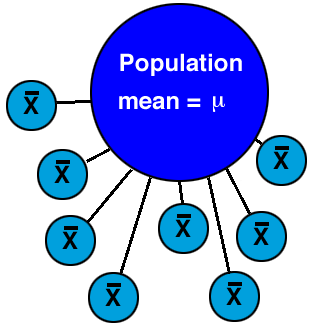
The Population Distribution
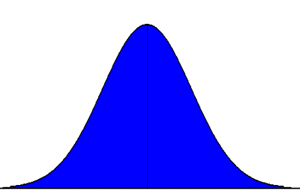
The population is distributed as N(μ, σ)
The Distribution of Sample Means
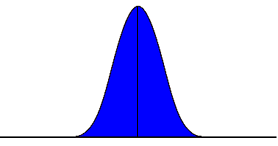
This is also know as a Sampling Distribution of Means. It has a mean of μ
and a standard deviation of  . Thus,
. Thus,
If a population is N(μ, σ) then the distribution of sample means
of size n is N(μ, σ/sqrt(n)).
Standard Error of the Mean

The standard error of the mean is the standard deviation of
the sampling distribution of the sample means.
The Central Limit Theorem
If a population is N(μ, σ) then
the distribution of sample means of n independent observations is N(μ,
 ).
When the population is normally distributed the sampling distribution of the sample means is also normally distributed.
For large n the sampling distribution is approximately normal even when the
population itself is not normally distributed.
).
When the population is normally distributed the sampling distribution of the sample means is also normally distributed.
For large n the sampling distribution is approximately normal even when the
population itself is not normally distributed.
Some Example Problems
A test of computer anxiety has a population mean of 65 and variance of 144.
1. A random sample of size 36 is drawn from the population with a sample mean of 68.
What is the probability of selecting a sample with a smaller mean by chance alone?
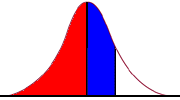
First, compute the standard deviation of the population s = SQRT(variance) = SQRT(144) =12
Compute the standard error of the mean: se = s / SQRT(n) = 12/ SQRT(36) = 12/6 = 2
Compute a standard score for the mean of 68: Z = (68 - 65)/2 = 3/2 = +1.5
The area between the mean and a Z-score of +1.5 is .4332
Thus, the probability of a score below 68 is .5000 + .4332 = .9332
2. What percent of sample means would fall above this sample mean?
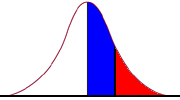
The Z-score computed above is +1.5
The area between the mean and a Z = +1.5 is .4332
The proportion above is .5000 - .4332 = .0668
Expressed as a percent 6.68%
3. Another random sample, this time with n = 64, has a mean of 62. What is the probability
of drawing a sample with a mean as low or lower by chance alone?
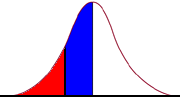
Compute the standard error of the mean: se = s / SQRT(n) = 12/ SQRT(64) = 12/8 = 1.5
Compute a standard score for the mean of 62: Z = (62 - 65)/1.5 = -3/1.5 = -2.0
The area between the mean and a Z-score of -2.0 is .4772
Thus, the probability of a score below 62 is .5000 - .4772 = .0228
4. What percent of sample means fall above this sample mean?
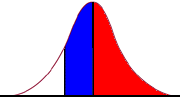
The Z-score computed above is -2.0
The area between the mean and a Z = -2.0 is .4772
The proportion above is .5000 + .4772 = .9772
Expressed as a percent 97.72%
Intro Home Page
Phil Ender, 30Jun98




 . Thus,
. Thus,
 ).
).



